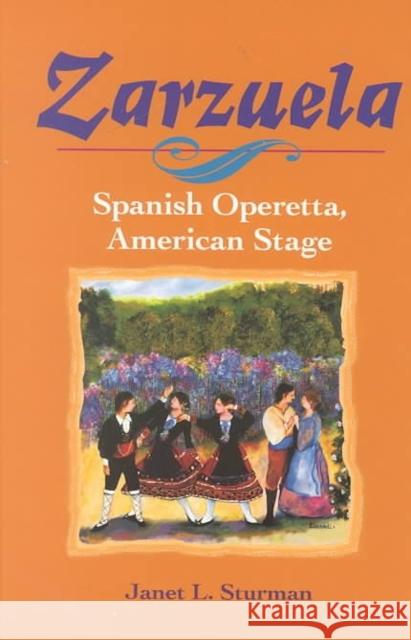Zarzuela: Spanish Operetta, American Stage » książka
Zarzuela: Spanish Operetta, American Stage
ISBN-13: 9780252025969 / Angielski / Twarda / 2000 / 256 str.
Once the most popular form of Spanish entertainment short of the bullfight, the zarzuela boasts a long history of bridging the categories of classical and popular art. It is neither opera nor serious drama, yet it requires both trained singers and good actors. The content is neither purely folkloric nor high art; it is too popular for some and too classical for others. In Zarzuela, Janet L. Sturman assesses the political as well as the musical significance of this chameleon of music-drama.
Sturman traces the zarzuela's colorful history from its seventeenth-century origins as a Spanish court entertainment to its adaptation in Spain's colonial outposts in the New World. She examines Cuba's pivotal role in transmitting the zarzuela to Latin America and the Caribbean and draws distinctions among the ways in which various Spanish-speaking communities have reformulated zarzuela, combining elements of the Spanish model with local characters, music, dances, and political perspectives. The settings Sturman considers include Argentina, Mexico, Puerto Rico, and the U.S. cities of El Paso, Miami, Chicago, New York, and Napa, California.
Sturman also demonstrates how the zarzuela plays a role in defining American urban ethnicity. She offers a glimpse into two longstanding theaters in New York, Repertorio Espanol and the Thalia Spanish Theatre, that have fostered the tradition of zarzuela, mounting innovative productions and cultivating audiences. Sturman constructs a profile of the audience that supports modern zarzuela and examines the extensive personal network that sustains it financially.
Just as the zarzuela afforded an opportunity in the past for Spaniards to assert their individualityin the face of domination by Italian and central European musical standards, it continues to stand for a distinctive Hispanic legacy. Zarzuela provides a major advance in recognizing the enduring cultural and social significance of this resilient and adaptable genre.











